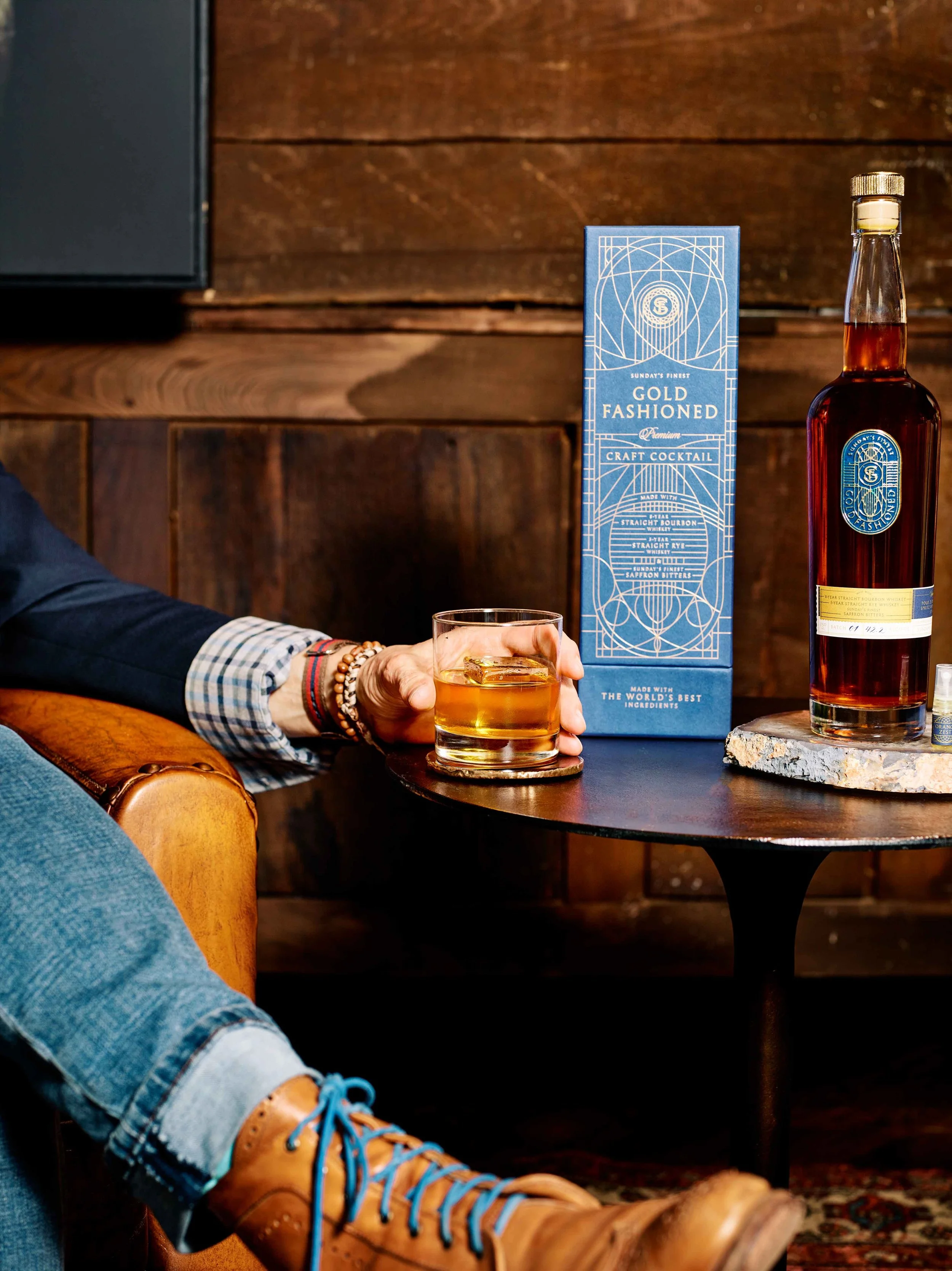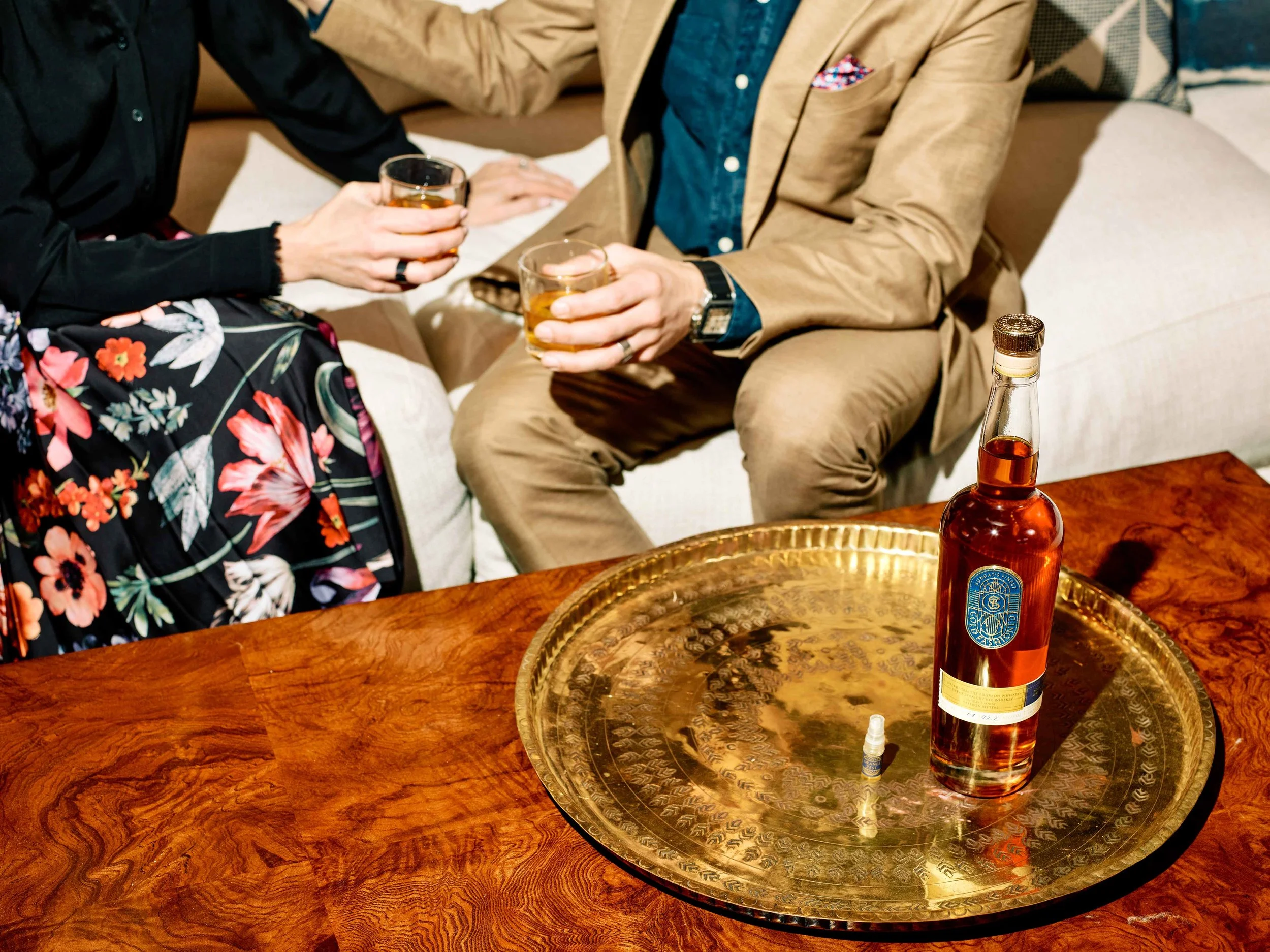Is the Gold Old Fashioned Bottled Cocktail Worth Its Weight in Gold?
The price is what first got the headlines: $150 a bottle. That eye-popping figure is the cost of one bottle of the Gold Fashioned by Sunday’s Finest Spirits, based in Chicago. The bottled old-fashioned, first released last October, is the brainchild of pioneering bartender Robert Haynes (of the renowned bar the Violet Hour in that city and the spirit company Apologue). He created the Gold-Fashioned using 8-year Kentucky bourbon, Tahitian vanilla, housemade saffron bitters, and an atomizer that allows you to spritz orange zest over the top of the drink. It’s a big-ticket, big-deal production that prompts a question or two: How is it? And is it worth it?
Before the pandemic hit in 2020 Haynes had launched Apologue, a brand that includes a saffron liqueur, a persimmon liqueur, and a berry liqueur, which he was working on full time until the world ground to a halt. He estimated that his business was 90 to 95 percent with bars and restaurants, which evaporated overnight. Early on, during the initial period of stay-at-home-orders, he partnered with Chicago’s One Off Hospitality Group on a ready-to-drink, canned margarita. (One Off owns the Violet Hour as well as the popular taco-centric Big Star restaurants in the city.) “It went really well, which was a big eye-opener, in terms of the ready-to-drink space,” Haynes said.
Creating the Best RTD
Based on that experience Haynes and his team started to explore the question, “What is the absolute best RTD [ready to drink] cocktail that we could think of? Using ingredients we feel comfortable with, the old-fashioned was the clear winner for us. There is an emphasis on the base spirit and we didn’t need to deal with the complexities of adding an acid.” The team knew they were going to raise some eyebrows with the cost but felt that the freedom to make the best drink they could was more important, Haynes said.
Justifying the Price
The cost per bottle breaks out to roughly what you’d pay at an upscale bar for a similar cocktail, around $12 a drink, and Haynes’ team would argue that most bars aren’t using 8-year- old bourbon, saffron from Afghanistan, or single-source Ecuadorian cacao. And the piece de resistance? The atomizer for spraying orange zest over the top of the drink, which Haynes plans to make bigger during the next iteration of the drink (from two milliliters to three) so that people can use it more frequently, or even on other drinks. “A great cocktail should be organoleptic, which means engaging all the senses, and someone said ‘What if we had the orange zest in an atomizer?’ and it took off from there,” Haynes said.
The reviews from a recent dinner, from bourbon and non-bourbon drinkers alike: a “delicious, warming, celebratory drink,” one guest said; “An elegant cocktail at home,” said another. Haynes’ assessment? “Having a four-star, luxury cocktail after the kid goes to bed on a Friday night seems to be fulfilling some sort of emotional need.”
The Future of RTD Cocktails
With the pandemic subsiding, or at least pandemic restrictions being a thing of the past, are RTD cocktails here to stay? Sother Teague, co-owner and lead bartender of the bitters-focused bar Amor y Amargo in New York City, thinks so. “Based on the data the RTD trend was on a meteoric rise prior to the pandemic, and is something that people want,” he said. “It is a little disheartening to me, as it seems like everything we do moves us away from human contact.”
Teague said that in “cosmopolitan places we have an embarrassment of riches, but the places that don’t have great bars, premium experiences, they’re most interested in these experiences. They’re good, they’re quality, they’re made with real booze.” Haynes said he is planning batch number two of the Gold Fashioned, in October, alongside two other drinks that are still in the research and development phase. Ultimately, Mr. Haynes said, “We’re trying to tell a genuine story with a cocktail, whether through trying to communicate a sense of time and place with the ingredients used or trying to make cocktails that have some meaning and substance beyond just being delicious.”



